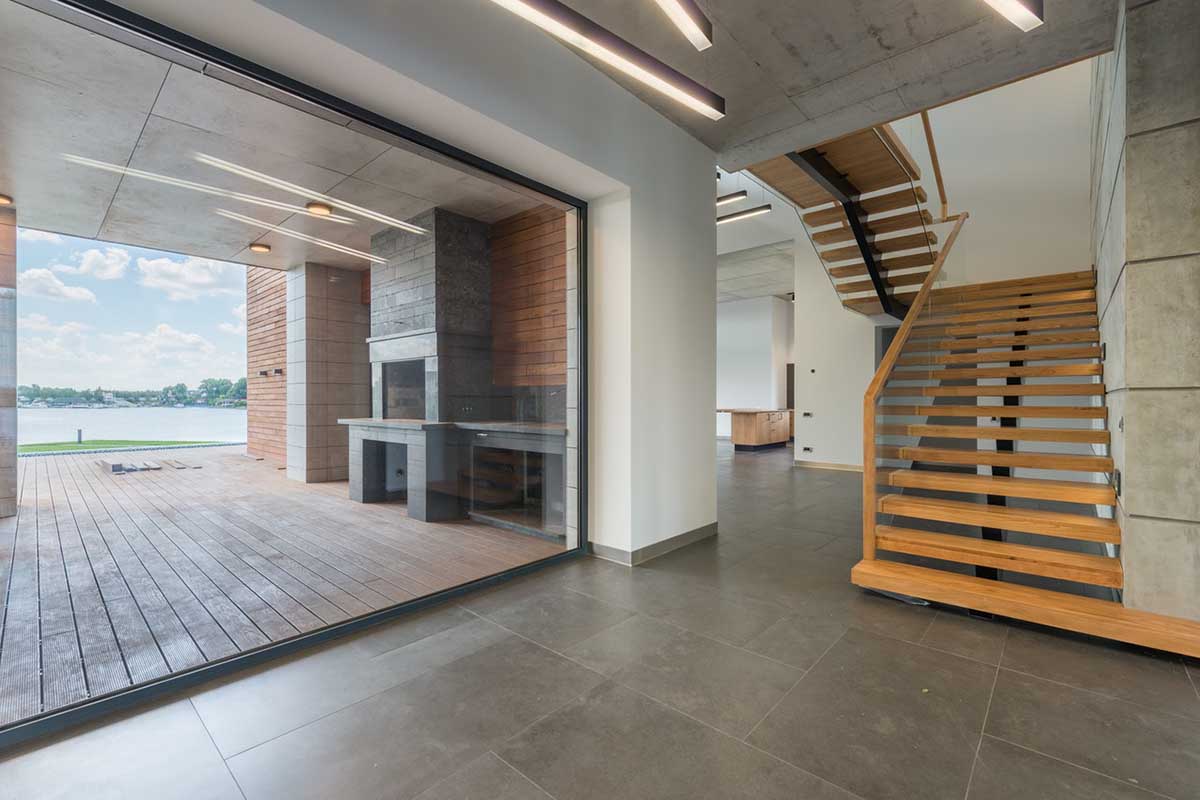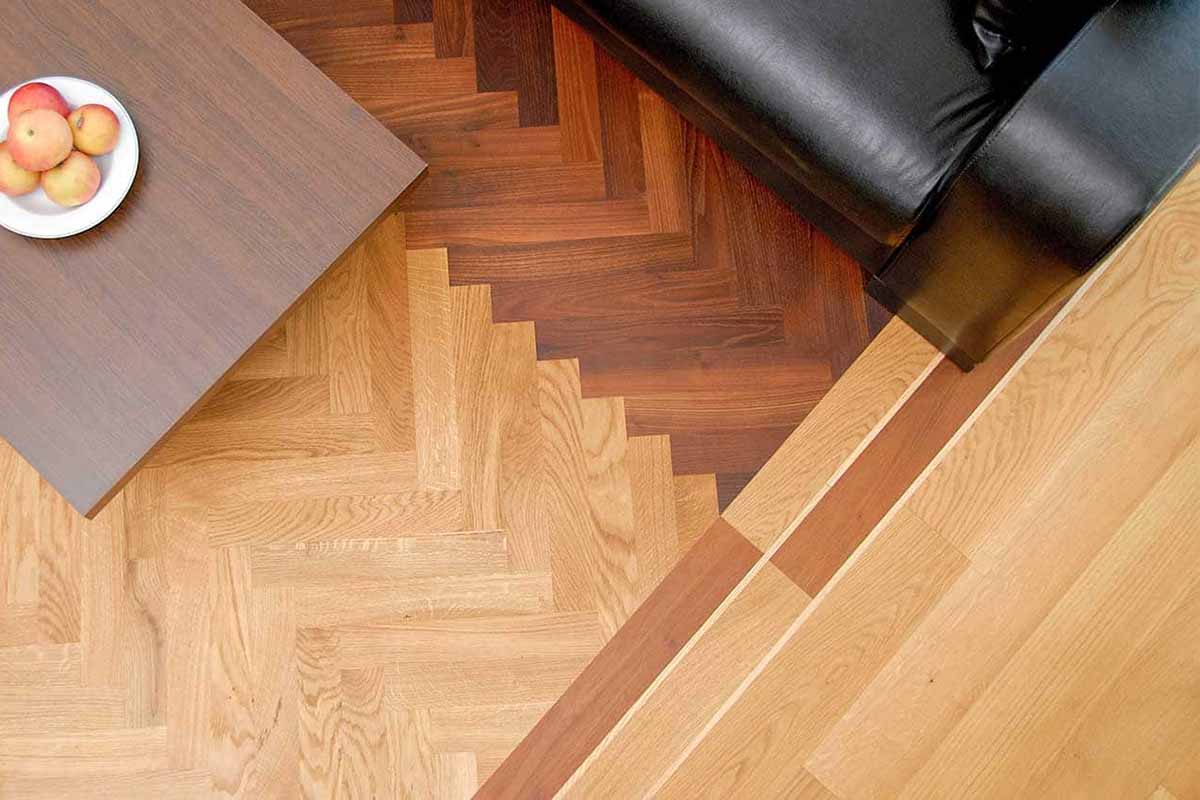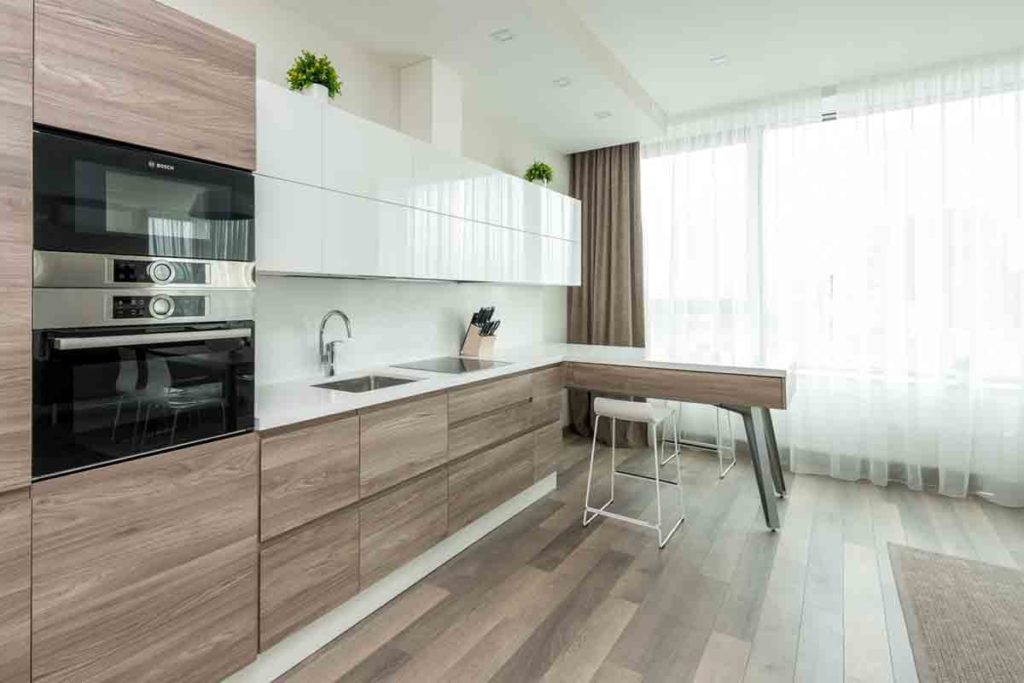The transition between two different wood floors involves using T-molding, using transition strips or seam binder, using a thin metal transition, and installing a threshold piece.
Wood flooring can be costly, and there are numerous hardwood flooring materials. You need to consider factors such as the color, pattern, and size of the wood floor. Also, things can get complicated when you want to replace the wood floor or just some sections completely.
An accident such as a kitchen flood may damage part of the floor. You’ll often find it challenging to match the wood floor in your home. You may have to consider having two different wood floors in such cases. This begs the question of how you execute a smooth transition between two floors.
Transitioning Between Two Different Wood Floors
There are some flooring techniques that will help you carry out a smooth transition between two different wood floors to achieve a more natural look. However, you may want to make some modifications based on if you want to install two floors or new wood flooring next to the existing flooring material.
Below are some ways to install two different hardwood floors:
Using T-Molding
T-molding is an ideal tool for matching two wood floors and, in some cases, more than two wooden floors. It’s also the easiest flooring design technique. It may not look great every time, but still, it does the job, particularly in areas such as the doorway.
T-moldings on the wood floor have a T-shape. It has the dense stem piece connecting to the subfloor and a less thick, circular top piece that’s been fashioned to handle the transition between two floors.
T-moldings function best on hardwood floors that are identical in height but produce a subtle visual and underfoot transition. This is the most straightforward technique for separating two wood floors. It requires just a 1-inch gap, the T-molding being cut to size, and finally installing it on the floor.
Usually, when you purchase wood flooring, you can also get complementing T-molding simultaneously.
Using Thin Metal Transitions
Just as there are pieces for wooden transitions, there are metal transitions as well. Recently, they’ve become very common, and most of them are as narrow as 1/8″. However, their shiny look and straight lines make them an ideal floor transition strip.
Metal transition strips do not just give your floor and room a modern look, but it’s also smooth to walk on. So using a metal transition strip is an ideal option. If you want to achieve a modern look and you’re confident that your word floor stains will blend well with the color of the metallic transition.
This technique is simple, and you’ll only have to leave a small gap between both wood flooring and install the metallic transition strip in between them with a strong adhesive.
Transition Strips or Seam Binders
Using a transition strip can be compared to the head of a T-molding piece. It’s a rounded and thin wood piece that you can install on a wood flooring seam to join both floors together. It’s a simple method as well, but it can look poorly done sometimes.
While it can smoothly match two hardwood flooring materials better than a natural joint, it’s not the best flooring technique.
Installing a Threshold Piece
A piece of threshold resembles a rectangle-shaped, flat block with a density similar to that of hardwood flooring. While it lacks tongues like a conventional hardwood plank, it can vary in materials such as stone, wood, or marble. A threshold piece typically has a width of many inches.
Furthermore, a piece of threshold is manufactured to be installed in doorways, particularly between two different flooring types. For a shiny threshold piece, we recommend going for one manufactured with a nice stone or wood.
Installing a threshold piece is not difficult. To do this, place an order for a length closest to your existing floor. If the size is not an exact fit for flooring transition, trim it to the right size, then install it between your existing floor and the new flooring.
How to Transition Between Floors of Varying Heights

There are cases in which you’ll have two dark wood floors with apparent differences in density and height. However, certain solutions can rectify this issue, but this depends on how significant the difference is between both floors.
If the difference is less than 1″, the flooring transition can be easily handled by a transition piece that bears some similarity to the T-molding. You’ll need molding with either an angled nose or a square nose because the two-floor treatments can blend the floor transition perfectly.
On the other hand, if there is a significant difference between both floors, you should start searching for options usually installed on staircases. We’re talking about stair nose pieces with a rounded edge on the upper floor, which is overlaid on a wood flooring piece positioned vertically against the face of the step.
So, if the wood floors don’t have the same height and the difference between them isn’t subtle, we recommend adopting staircase flooring techniques for several steps of the elevated floor height to achieve a smooth and visually appealing transition. So here are the ways you can match woods with different heights:
Install One Wood Floor with a Border
Laying a floor with a border is one of the best ways to transition between two wood floors without needing to purchase transition pieces for the job. The final effect will look great in any room, whether a large or a small room. To carry out this method, install about a square of hardwood (which can be one or a couple of planks) outside a single wood floor area.
Then you install the flooring within that area, and it will appear elevated compared to other parts of the floor. The efficiency of this flooring technique is based on a well-smoothened edge on both floors because you’ll be joining these floors against each other.
Suppose you want to install a new floor next to the existing floor that has its roughened edges hidden beneath a transition piece. In that case, you’ll have to cut the wood edge of the old flooring by roughly 1″ to produce a clean, new edge to accommodate the border of the new flooring.
Install Both Floors in Irregular Patterns
An irregular pattern is what you need to solve this problem. For instance, if you installed the first flooring vertically or horizontally, you should install the second one using a completely different pattern, such as a diagonal line.
You can also choose from the available layout options, such as herringbone or parquet flooring patterns. Each pattern resembles a unique flooring material, but they’re just different layout techniques. For best results, we advise that you combine this technique with the above-mentioned border technique.
Tips for Transitioning Between Different Woods

Knowing the different flooring techniques isn’t enough. You should also know tips to ensure your wood floor transition is spot-on and without flaws. The below tips include:
Selecting Contrasting Colors
Installing contrasting floor colors adjacent to each other is one sure way to guarantee a high-quality transition. So, if one floor has lighter tones, the floor next to it should be a darker wood. Using colors that are too complementary to each other isn’t a bad idea, but it can make your floor appear like you put all your flooring in the individual room at the same time. It can even look like an error.
We recommend picking two flooring materials that are somewhat different from each other and hiring a flooring professional to match woods for you.
Consider the Size of Your Room
If you install a dark wood floor in smaller rooms, such as the dining room, it can create an impression of the room being closed-in. On the other hand, using light colors can make it seem larger because it will brighten it.
However, there are no specific rules for larger rooms, so you can get away with any color choice. Hence, before deciding on the floor colors to use, consider the size of your room and if it has natural light. In summary, different flooring colors apply to different rooms.
Take Other Flooring Types into Consideration
If you carefully considered the above-mentioned flooring techniques and tips and nothing still seems right, then it’s a sign to look at other flooring types. Other floor options include vinyl or tile. Some wood floor transition tips and techniques may apply to these floor types, but you don’t have to worry about floor layout or color contrast.











